-
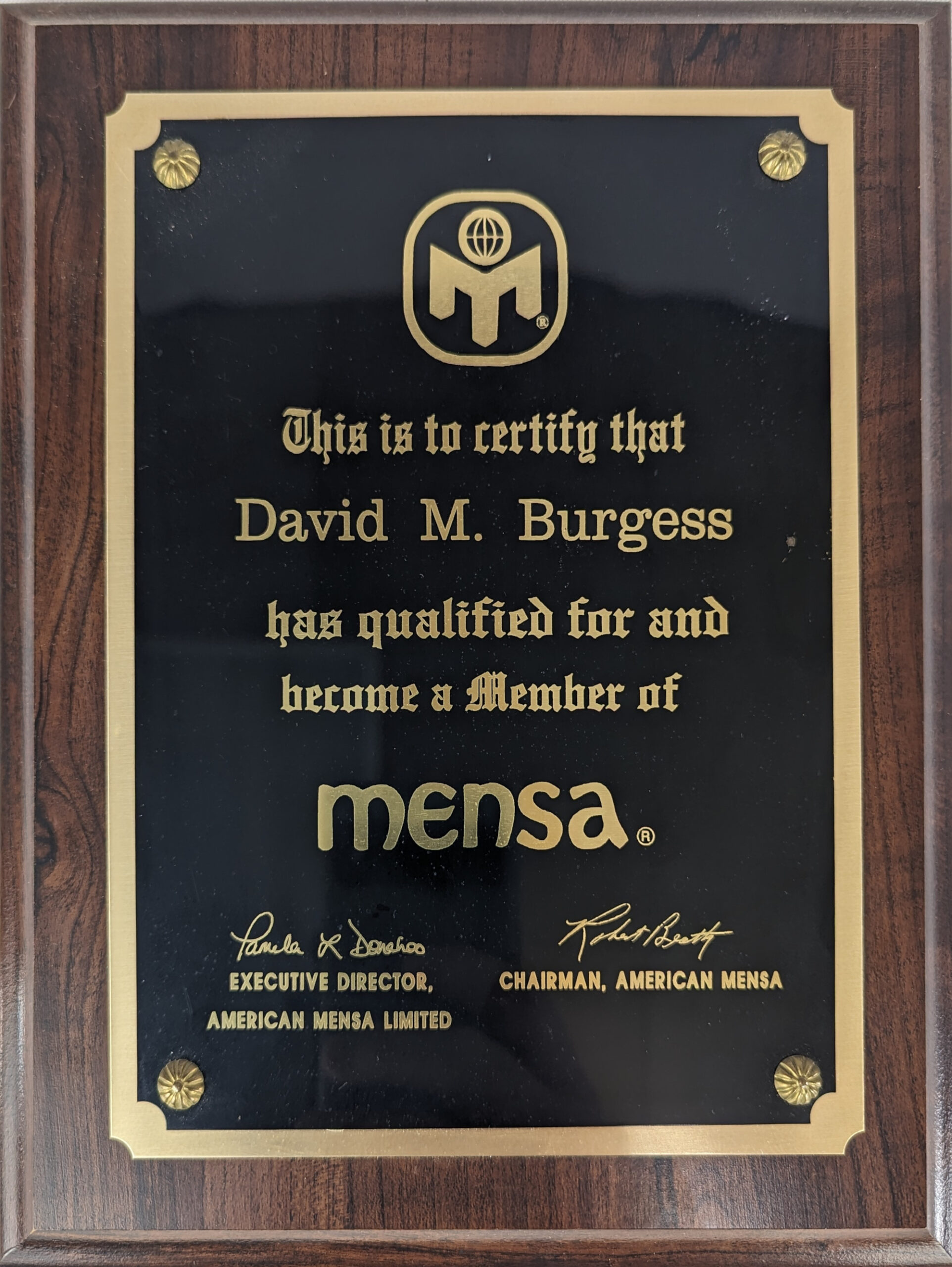
I am a Mensa Member
That’s right, the title says it all, I am a member of Mensa International.
I had mentioned in another post that I had switched to community college in the middle of my undergrad. While at community college, I had made a few new friends taking my computer science courses. An undergrad in computer science usually requires two semesters of calculus and I ended making one my first friends in my calculus class. As is the case with college friendships, we took to each other fast and spent most of our study time together, doing homework or working on group projects.
At some point my friend expressed his frustration with being at community college, which happens to be where his mother works, so he got to go there for free. In any case, he was bemoaning how everyone at community college was so stupid. I turned to him and said, “Well, you met me here, I’m pretty smart!” To which he replied, “Well, you’re no genius!” For whatever reason, that stuck with me.
A while after I even stopped attending community college, the Mensa convention came to town and was at a hotel about two blocks from where I live. If you came with a check for the test fee, you could be tested that day and see if you qualified for entry. That’s what I did and when the results came back, I had scored in the 99th percentile, more than enough to qualify. In the end, this was something I had to prove to myself. I never even told my friend. We began to lose touch once we were no longer in school together.
-
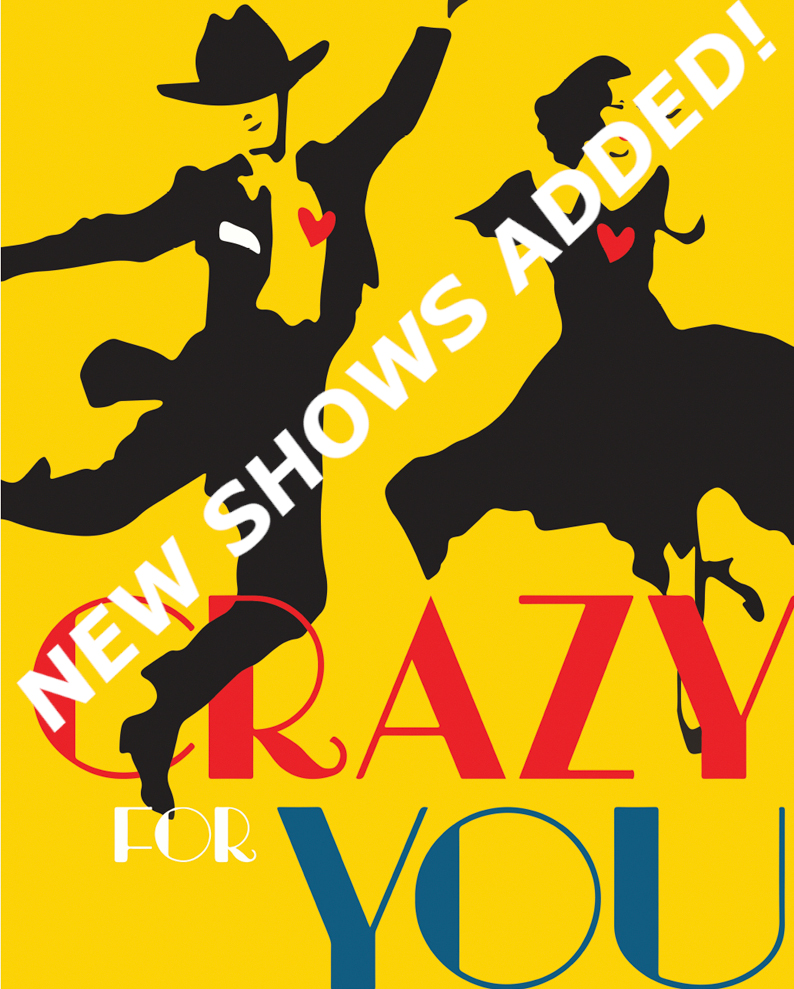
New Dates Added for “Crazy For You!”
You may have heard that our first weekend of “Crazy for You” at Villanova University had to be cancelled due to illness. Fortunately, everyone is doing well and they just announced a bunch of new dates added to the performance schedule! Check out Villanova Theatre on Facebook or Instagram, or check villanovatheatre.org/crazy-for-you to find out when tickets will be available.
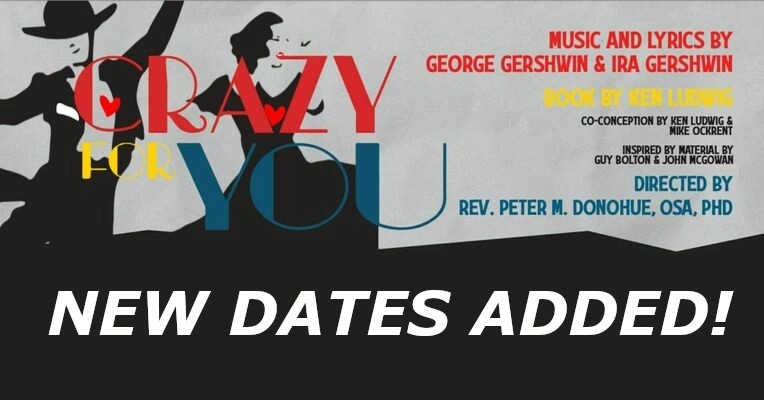
-
Voice Lessons
I started taking voice lessons when I was 17. I had heard anecdotally from my high school choir teacher that singers could get paid working for churches. Since I had been in virtually every choir that was available to me since I was in 3rd grade, including being in the chorus in musicals, advanced, chamber, and district choirs, I thought this might be something I could do. I opened up the literal yellow pages to “churches” and cold called every church listed there. To my surprise, I received one call back from the very church that housed the nursery school I attended that was, at one time, my family church, St John’s in Bala Cynwyd, Pennsylvania.
I worked there for an entire season, from September until June, singing every Sunday and special church service including Christmas and Easter. I made somewhere around $35 per hour, which at the time, blew my mind despite the fact it was only 4 hours a week. Still I thought I was doing great for a 17 year old!
I also had heard that one of my favorite singers in my choir took voice lessons, so, once I had a job, singing in the church, I booked my first voice lessons. Again, I opened the yellow pages and looked up music schools. I found Bryn Mawr Conservatory of Music and I gave them a call. I started my voice lessons just a week or two later with Mrs. Kathryn Blum Barone. I stayed there until I started my Freshman year at West Chester University where I ultimately became a music major with voice as my instrument. There I was able to take 3 semesters of voice lessons.
Unfortunately, I changed my major and ended up getting a degree in IT and didn’t take voice lessons again until I attended Temple University in 2016. There I studied theatre and eventually joined the choir and got access to voice lessons. There I got one semester of voice lessons with grad student, Tyler Tejada.
Soon, I hope to return to voice lessons and I find them invaluable for building a proper singing technique which has helped me tremendously as a performer, both singing and acting, even understanding how to reproduce different sounds in accents and dialects.
-
I am a Designer!
I never really set out to be a designer, but once I started making costumes and props for shows, I just couldn’t stop. I use as much of my technical background as possible when it comes to being a designer. I love using technology to solve problems and create automated processes. Below are some pictures of the variety of things I have designed. Also, check out Amanda Playwythe to see the clothing I design making sure to be inclusive for plus sized men!
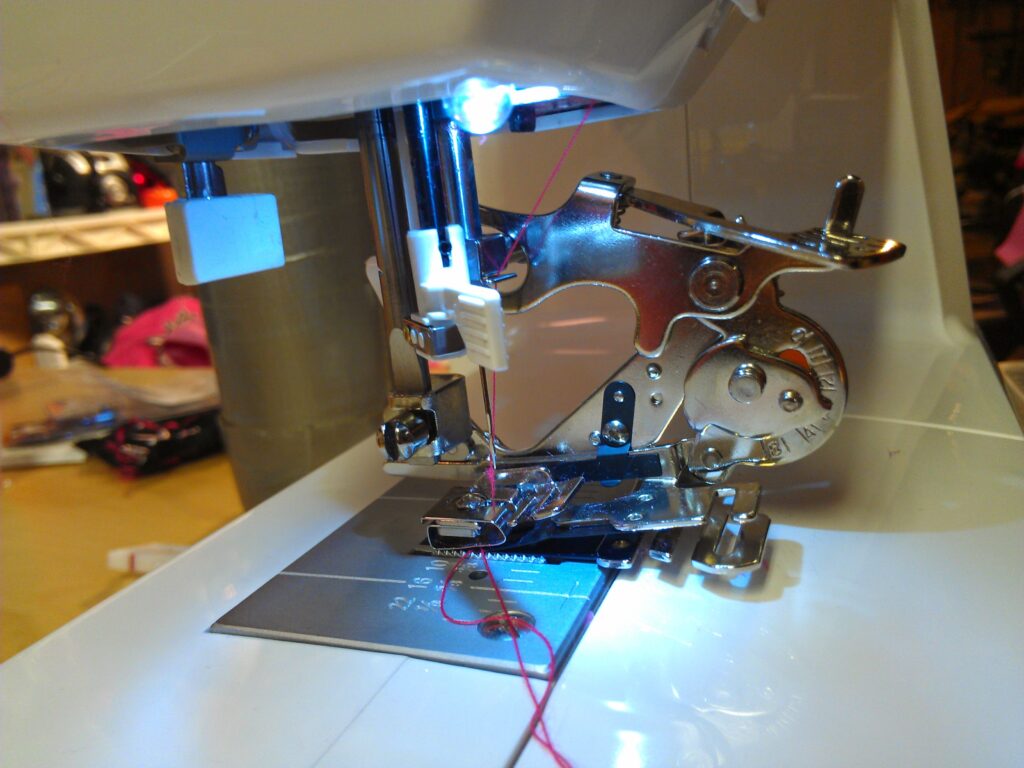

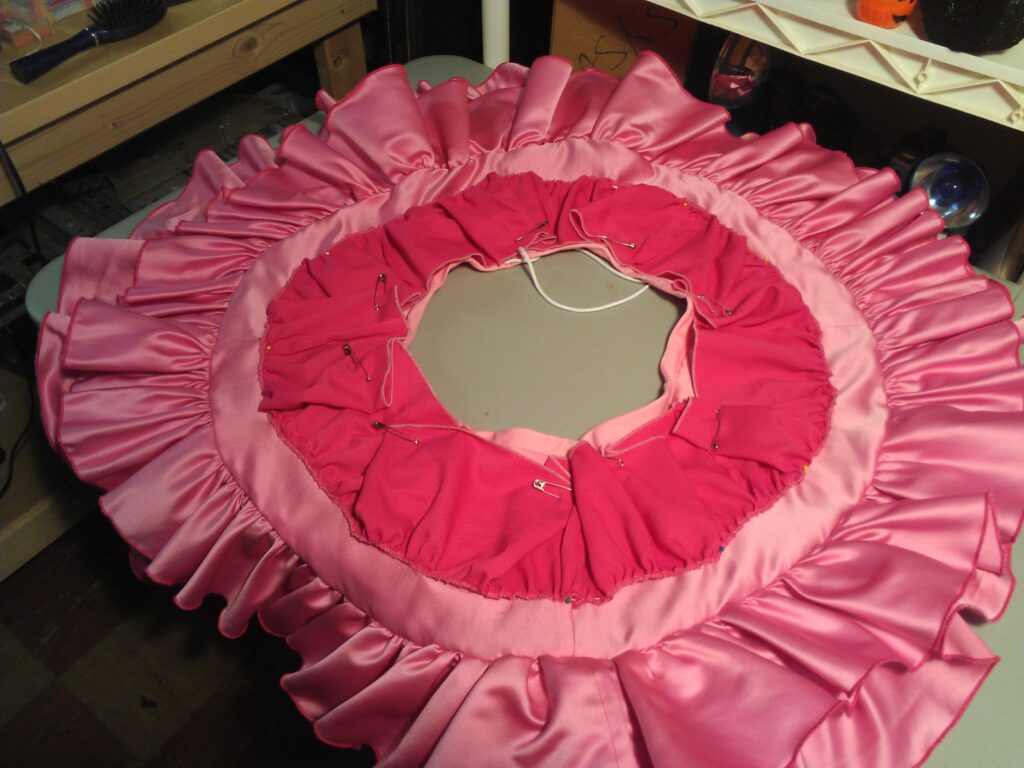
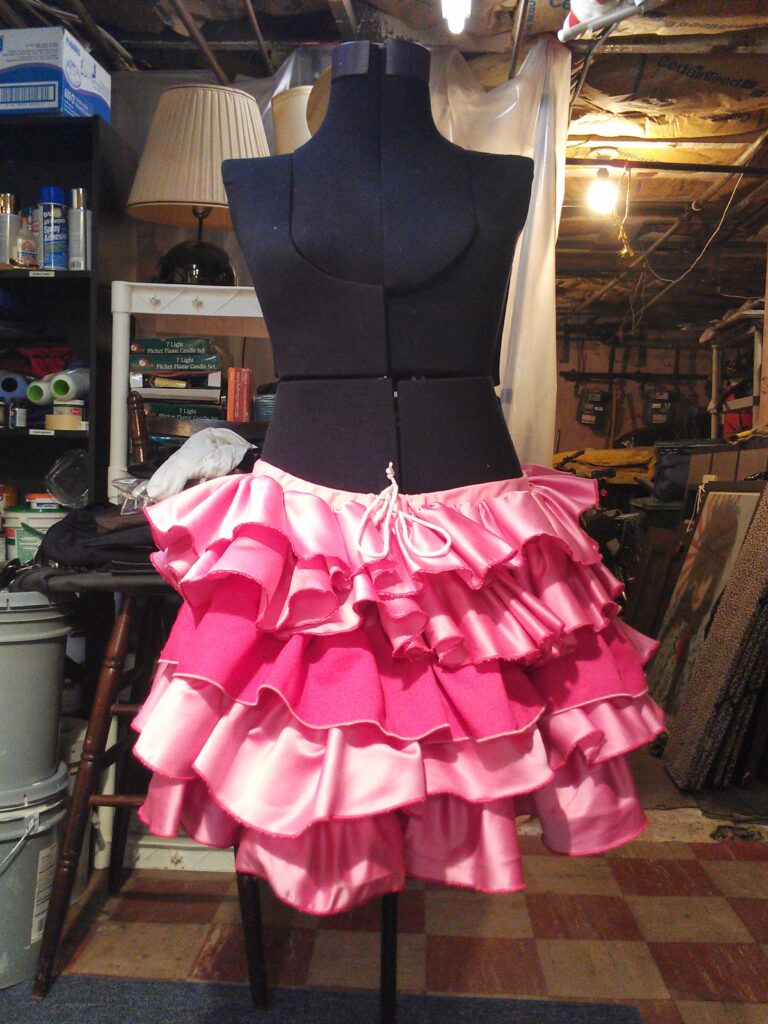
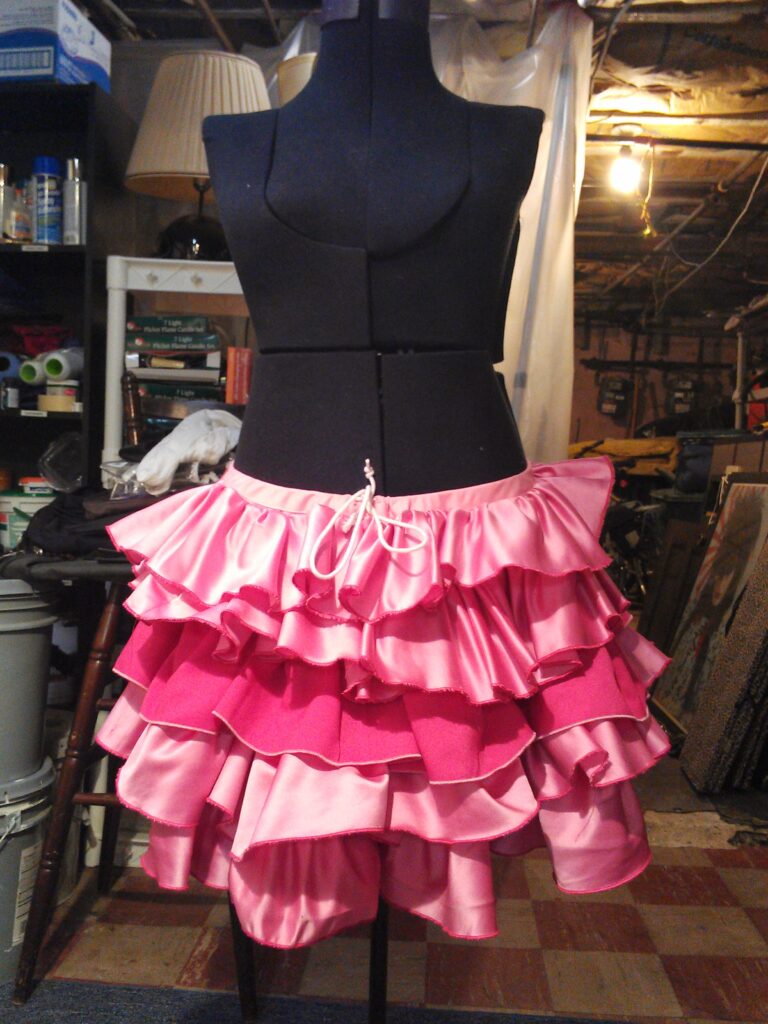
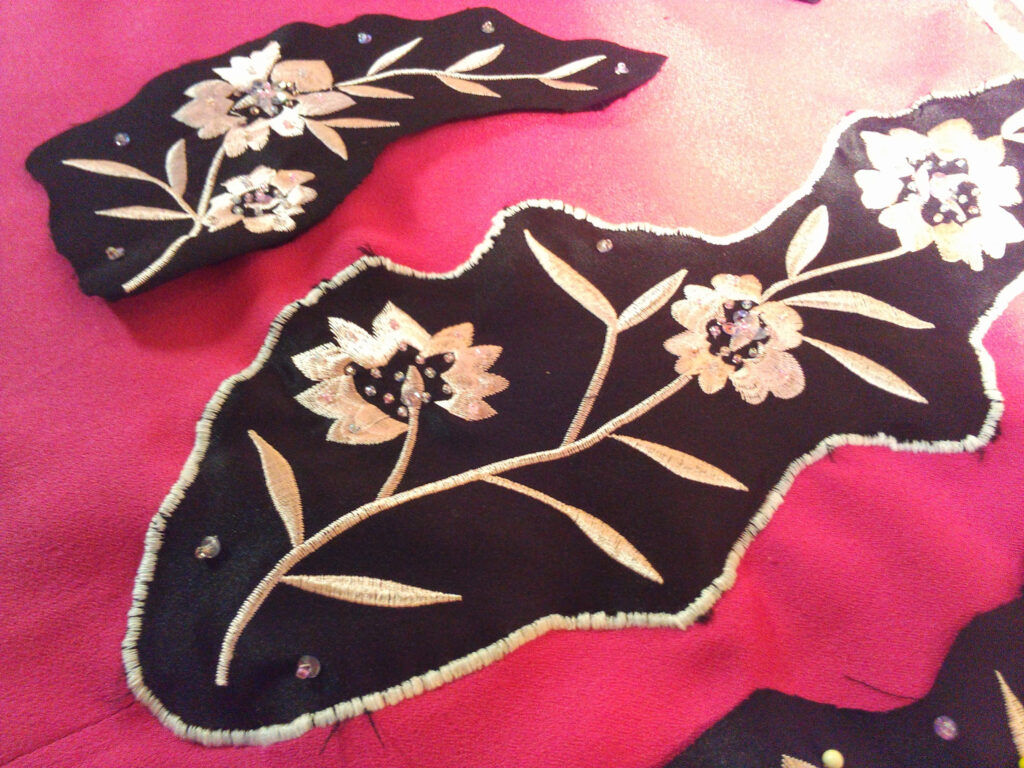
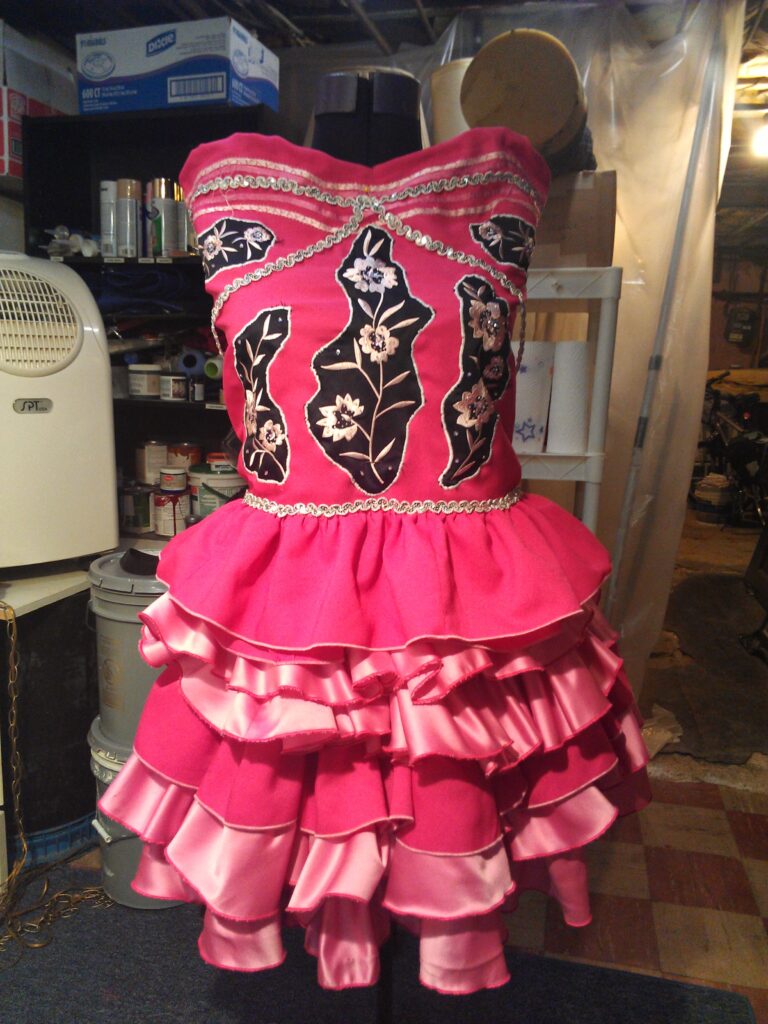
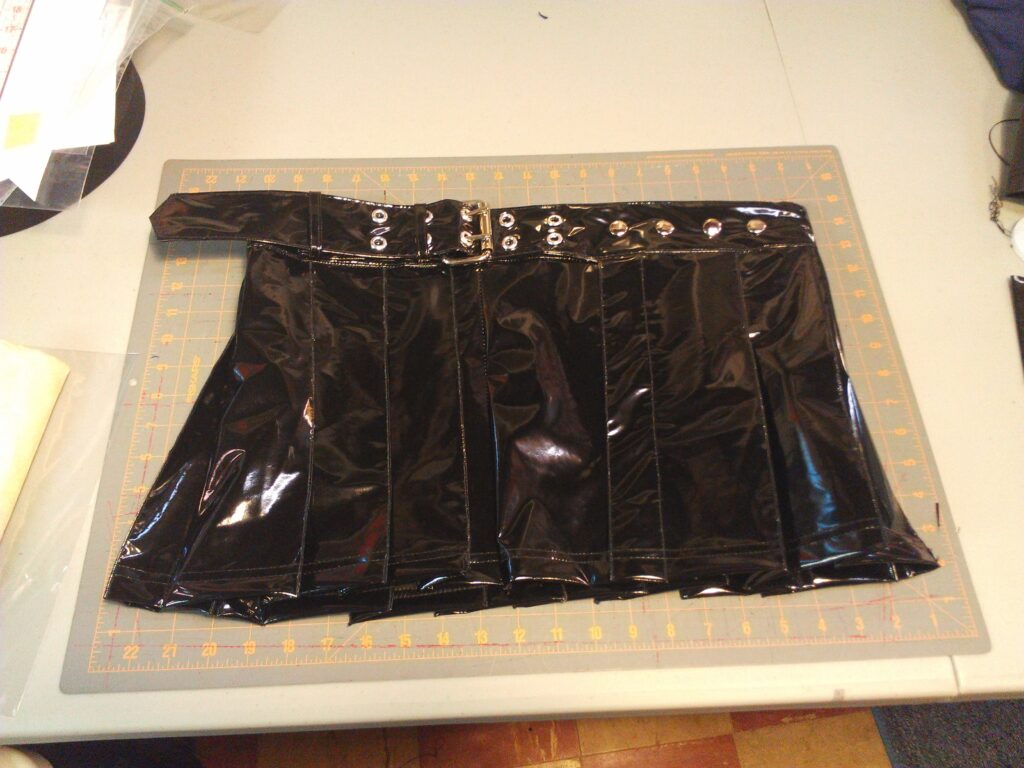
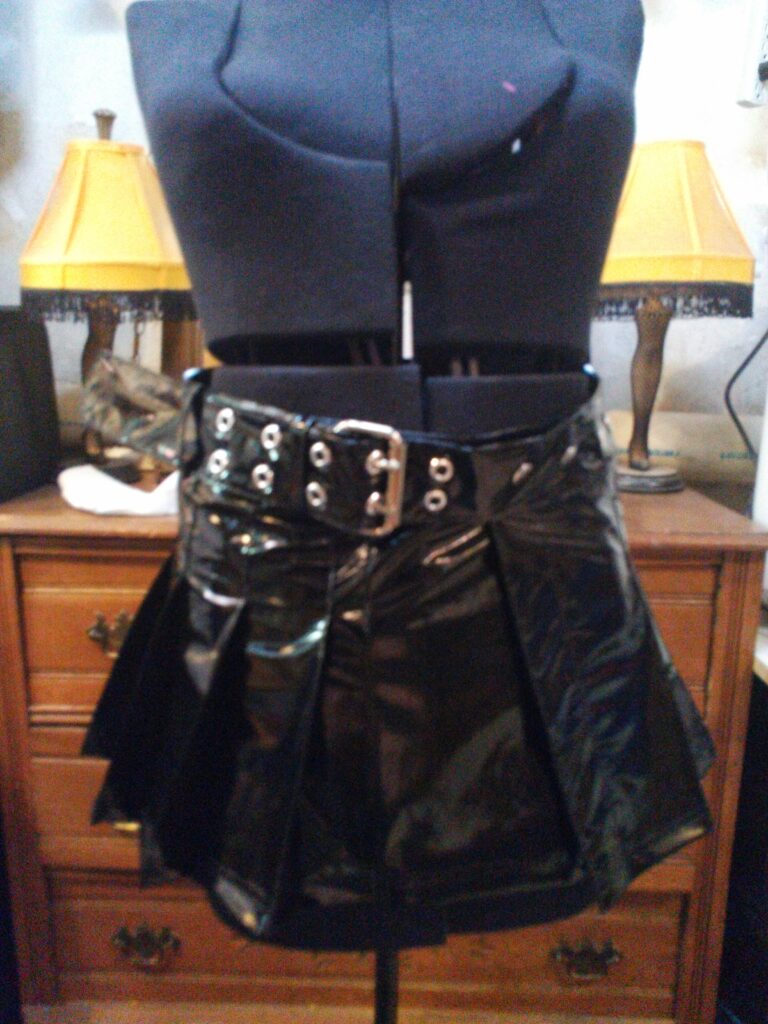
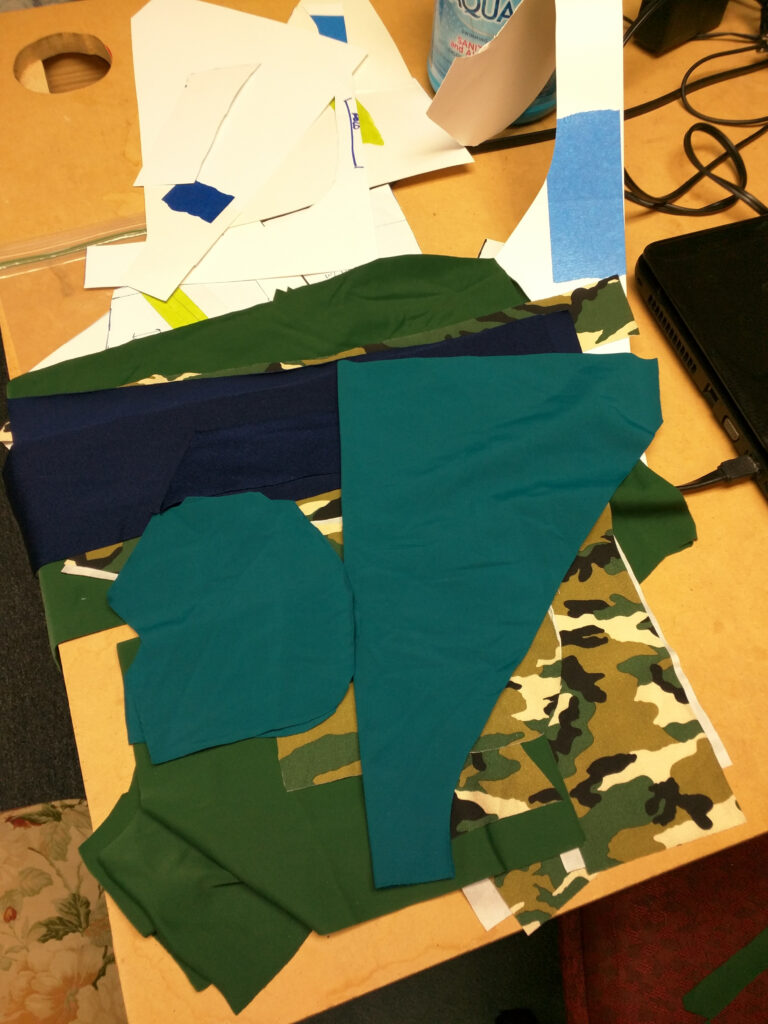


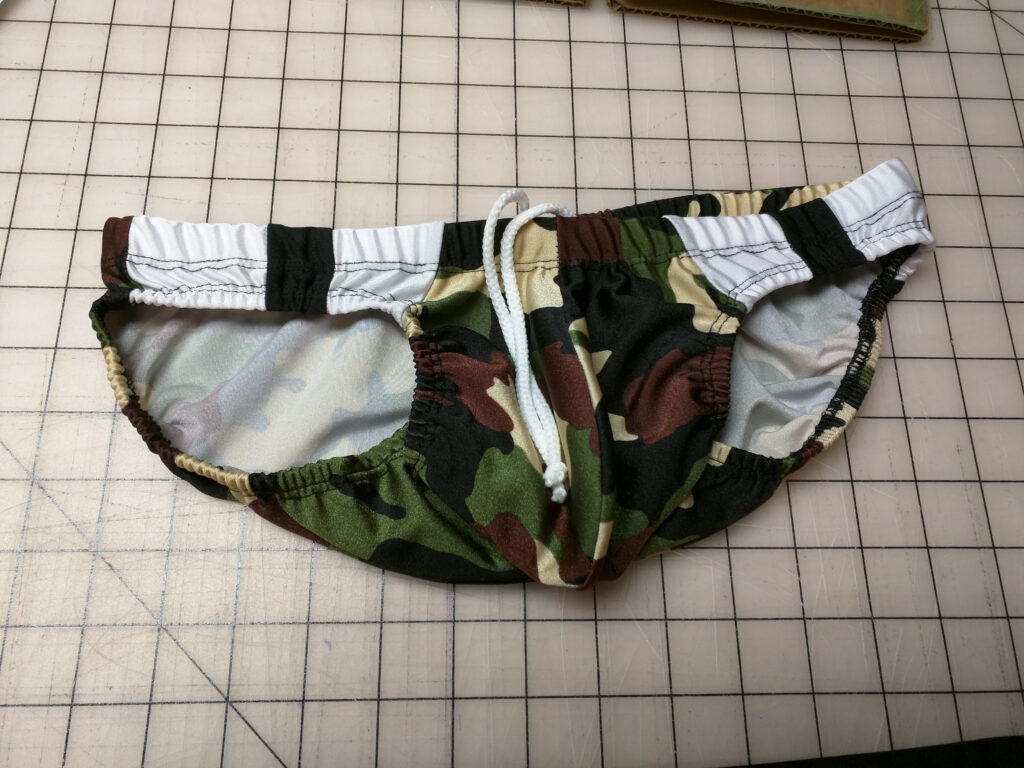
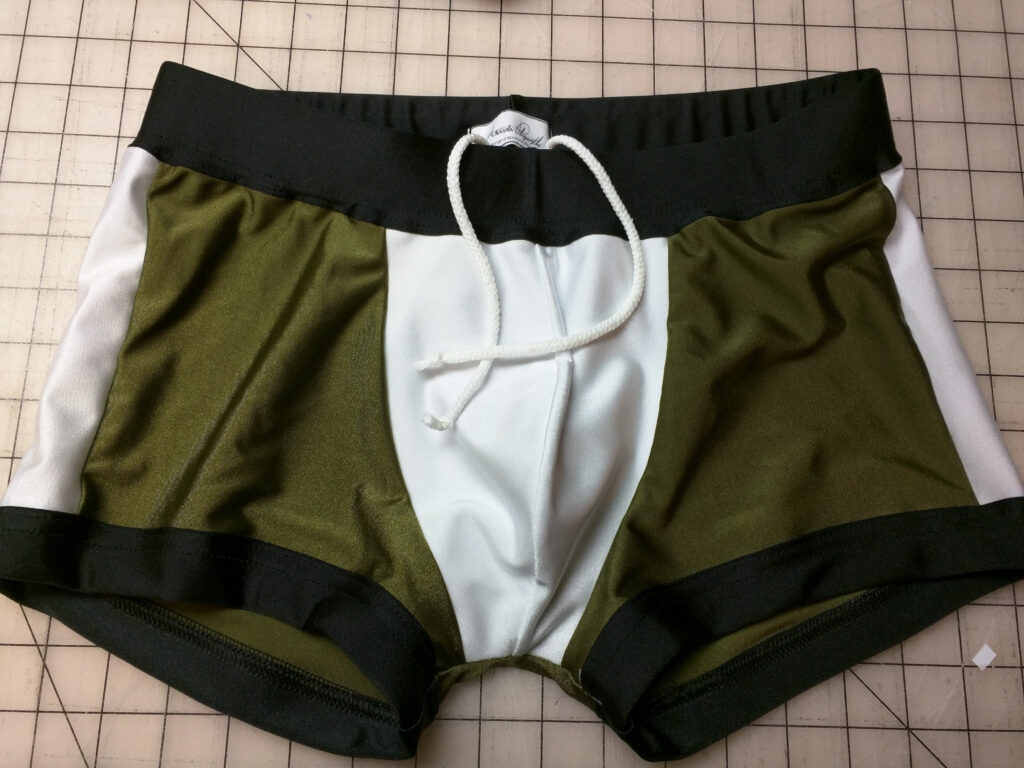



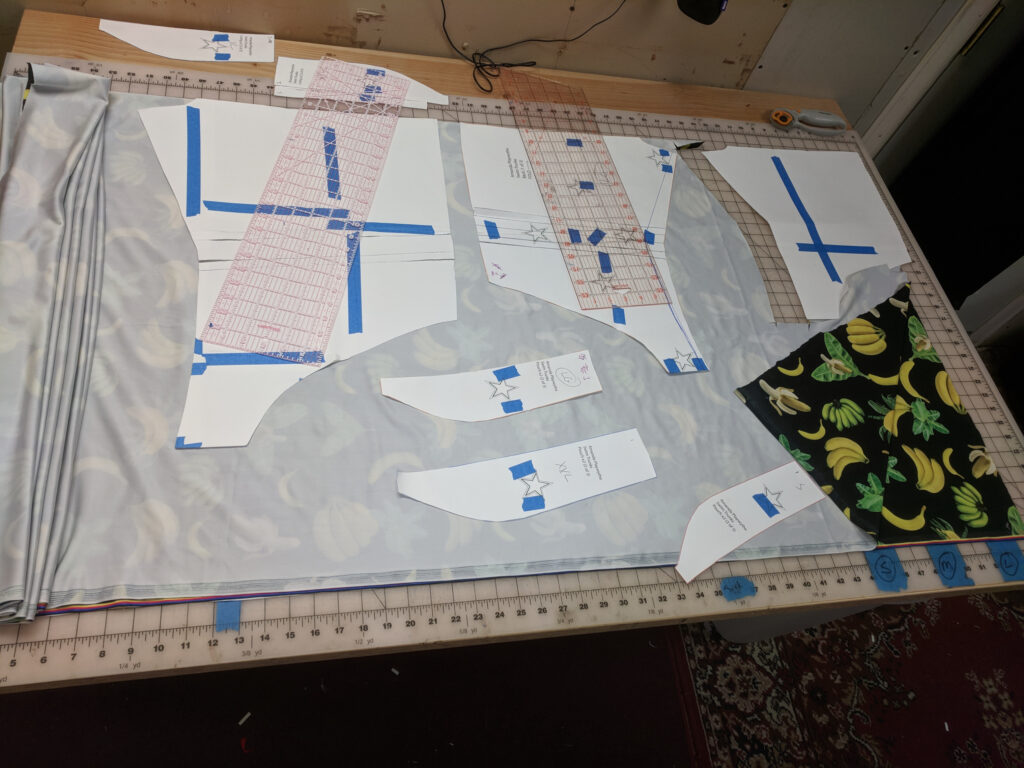
-
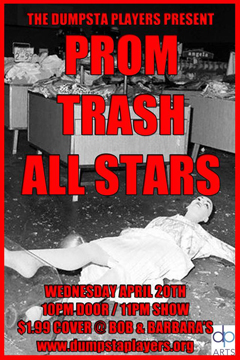
Amanda Playwythe
At an event called “Prom Trash” Amanda was born.
I went to my first Dumpsta Players show in the spring of 2003. My friend was dating someone in the cast. He said it was Prom and to dress up, so I did. I wore a tail coat and a top hat, leftover from my goth days, and threw on a purple marabou boa as a finishing touch. I had no idea what I was about to experience. This was a show unlike anything else I’d seen. Drag Queens, Drag Kings, and a variety of other strange characters, in a semi-scripted show with lip synced musical numbers culminating in the crowning of the Prom Trash Queen. I had dressed up so when they asked who wanted to compete, I lined up to go on stage. I didn’t make it past the first round. My look was outrageous enough and showing up in full drag was a guaranteed pleaser.
Over the next year, I went to every show as I hatched a plan to win. But, first I had to lose. Yup, my first time I lost. I chose to play a Dominatrix with a strap on, my nod to Gen, the lead singer of the Genitorturers, but somehow, I wasn’t trashy enough!
The following year, Amanda Playwythe was born. This year, the look was blonde hair wearing all Pink except for a black pleather mini skirt. I hadn’t even settled on a name when I arrived at the show. I wanted something with a pun and I always appreciated the joke from the Simpsons where Bart calls Moe’s asking for Amanda Hugginkiss. Well, when it was time to actually go on stage at the beginning of the competition, I just blurted out Amanda Playwith, but when I wrote it on my name tag, I was determined to make it different somehow so I adopted the Olde English Spelling that I still use today, Playwythe!
For the rest of the night, I gave way to the character and committed myself to the idea that Amanda would have absolutely no idea what was going on around her and her trashiness overwhelmed the audience. I won the following year as Amanda as well.
When the Dumpsta Players put on “Prom Trash Under the Sea,” I adopted a whole new Character with another pun for a name, MC Urchin, get it Sea Urchin?? But she was a rapper, hence the MC. So, I wrote little rhyming phrases and tried to use them as much as possible. I totally had a folded up piece of paper in my bra cause I did them so last minute I never memorized them. But, I must have been memorable, because I won.
The last time I won was when we did a musical inspired Prom Trash, I came as Drag Ursula from the Little Mermaid. Oh, those poor unfortunate contestants didn’t stand a chance, mwahahahaha!
All in all, I spent 12 years performing with the Dumpsta Players. I learned a ton about queer culture, music, and artists from a time when those ideas were less than main stream. I also learned that there’s a lot to be said about commitment. Commitment to character and being in the moment and how sometimes that’s enough to propel you over the top. I maintained that level of commitment to my work and continue to embrace drag and perform as Amanda Playwythe when possible.
The Dumpsta Players’ live performances sadly came to an end in 2016. However, in addition to performing as Amanda as much as I am able, I started a clothing label using her name. The ads write themselves; get yourself Amanda Playwythe today! I realized there was a serious lack of options for plus size men when it came to underwear and swimwear. I put the very same sewing skill that got me making fun outfits for Amanda, to the test and learned how to design ready to wear clothing.
You can check out my shop here!
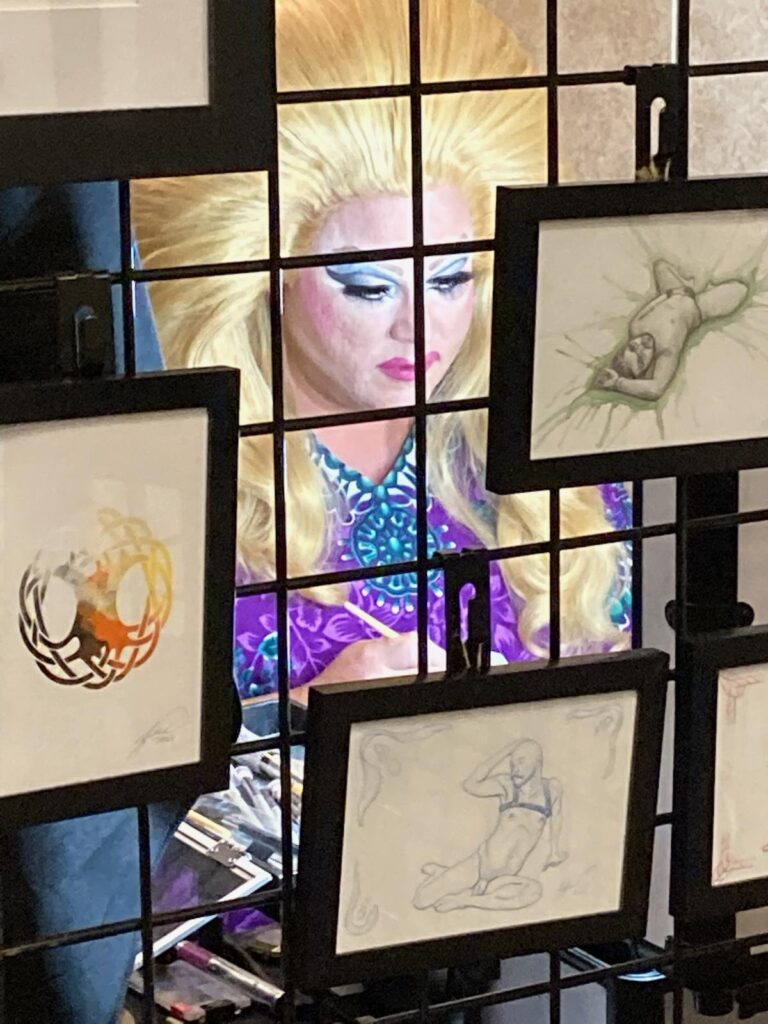


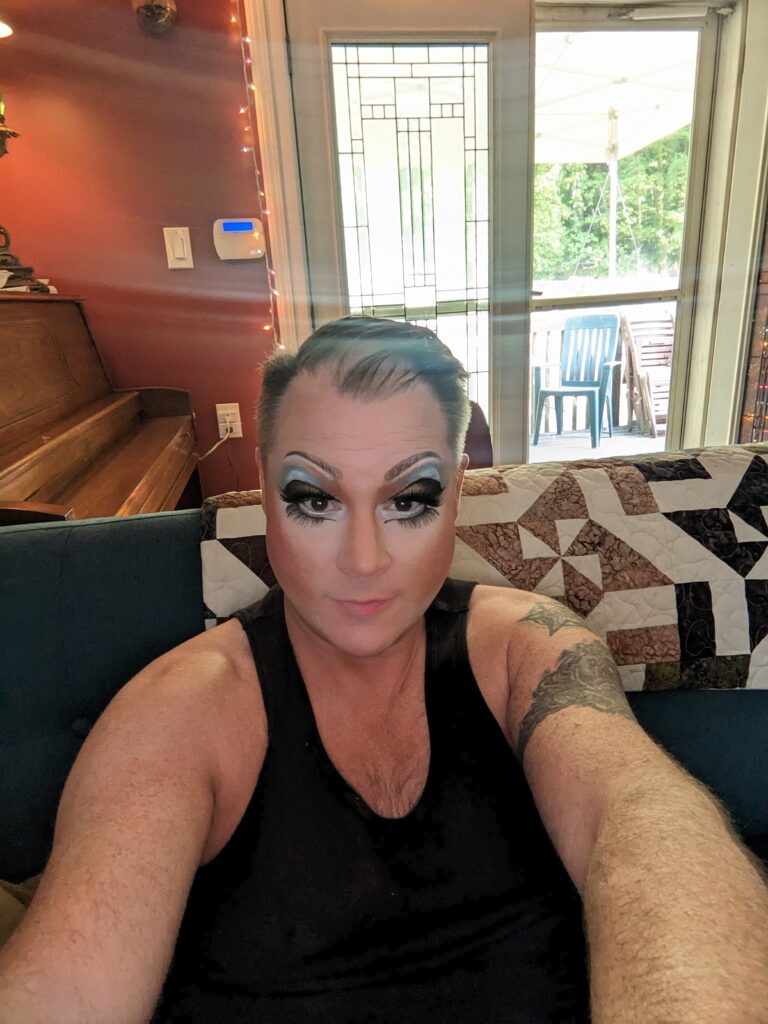

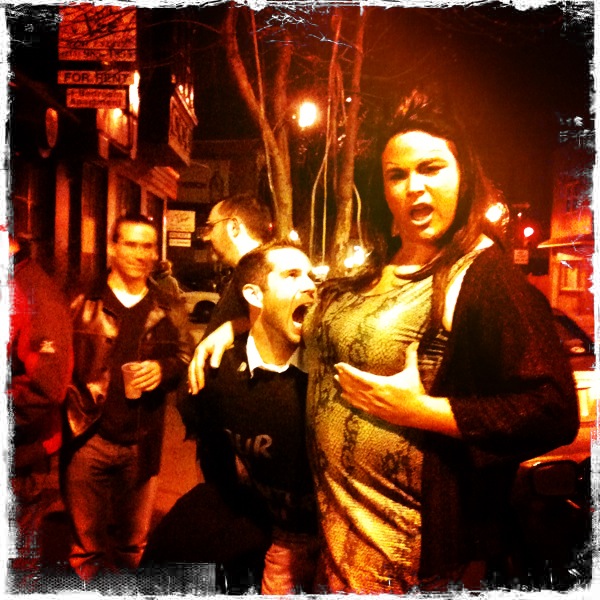
-
Press!
I’ve been featured in various newspapers and publications over the years. Here’s a few of the articles I’ve managed to save.
The following clips are press from various Philly newspapers from when I was doing drag. This includes playing a socialite in the Dumpsta Players’ production of “Pari$$$ is Burning,” an early performance of Amanda Playwythe in “PromTrash Plastik” and a lady Devil in “Octoberfist V.”



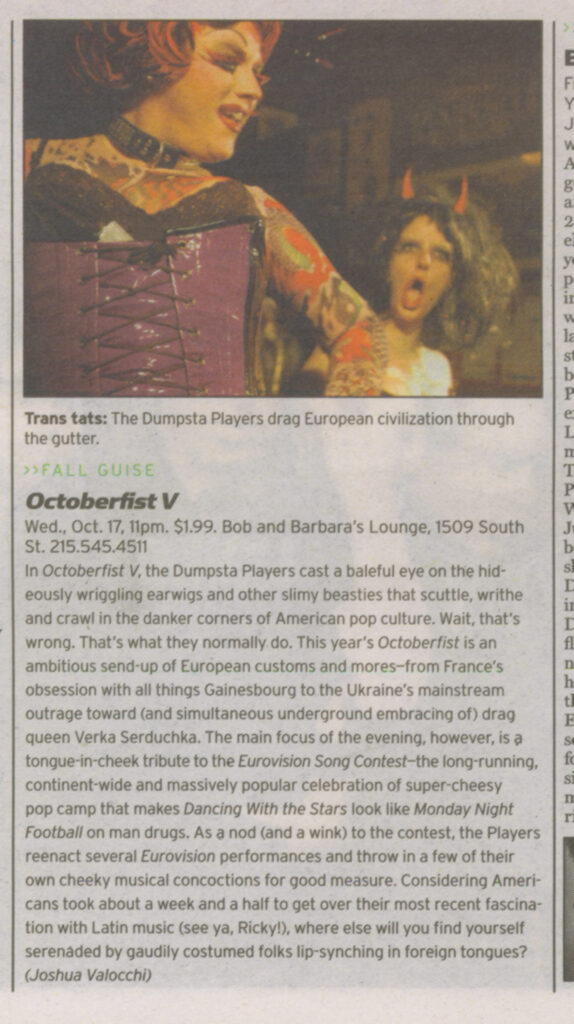
The following pics are from the Qfest Closing Night Parties when I was a projectionist. The first one is with my former partner dressed in drag, which is a tradition I carried on for many years, that I would dress in drag and work as a projectionist for the final night of Qfest. The second clipping below is from a particular year where the featured film was “Bear City 2” and the closing party was held at Philadelphia’s leather bar, The Bike Stop. For this event, I dressed the part and a Philadelphia Gay News photographer took my picture and later used it in an article about Bears in anticipation of Leather Pride 2012.

